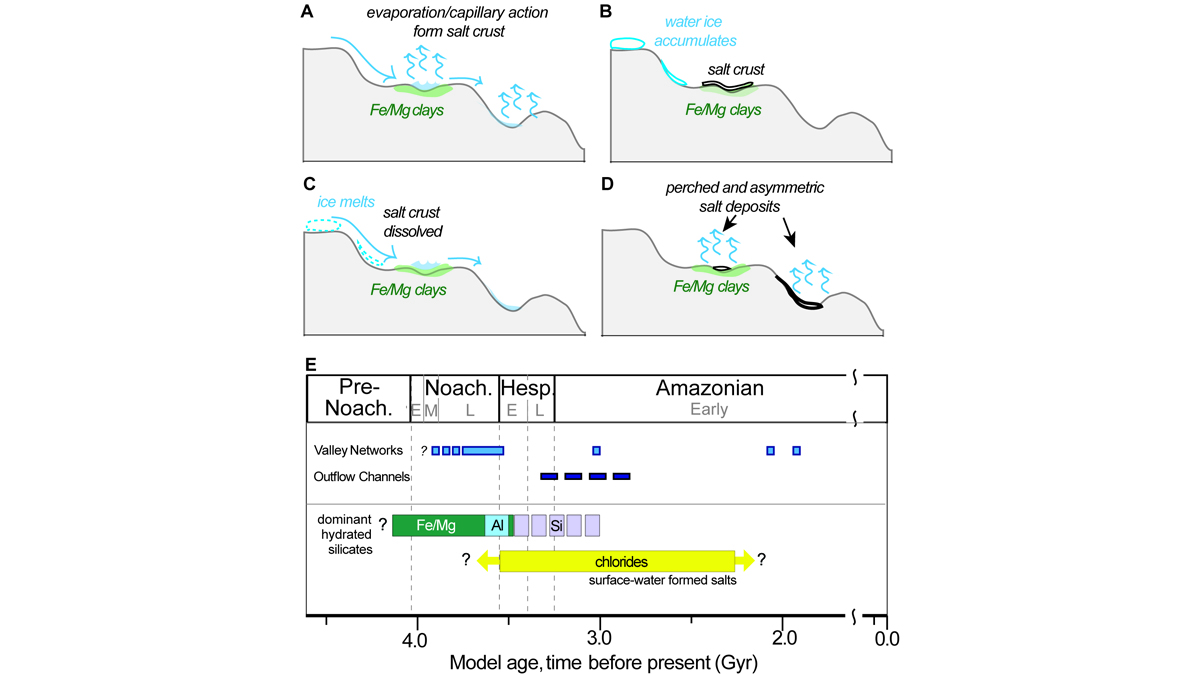Editors’ Highlights feature summaries of recent papers by AGU’s journal editors.
Source: AGU Advances
Early Mars had lakes and flowing water, but modern Mars is bone dry. How the former evolved to the latter is important for understanding long-term climate evolution and the potential preservation of astrobiological signatures. Leask and Ehlmann [2022] carry out a detailed survey of chloride deposits, associated with late-stage evaporation of standing water. They find that the youngest evaporite deposits are much younger than previously thought, perhaps 2.5 Ga, showing that Mars was hydrologically active surprisingly late. The volumes and geometry of the deposits are more consistent with surface runoff, perhaps driven by transient melting of ice, rather than subsurface flow. This study poses new questions for climate modelers, and opportunities for quantitative and geochemical modeling of these “last-gasp” Martian streams.
Citation: Leask, E. and Ehlmann, B. [2022]. Evidence for deposition of chloride on Mars from small-volume surface water events into the Late Hesperian-Early Amazonian. AGU Advances, 3, e2021AV000534. https://doi.org/10.1029/2021AV000534
—Francis Nimmo, Editor, AGU Advances

